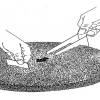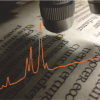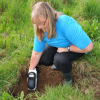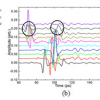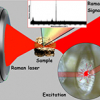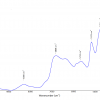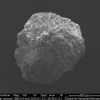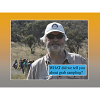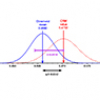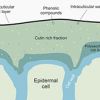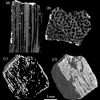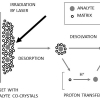Articles and Columns
This column now turns its attention to sampling using a very popular tool, the “sampling spear”. There is much good to be said about spear sampling—and only one thing which is bad. But this is bad enough: spear samplers are very, very difficult to get to produce representative samples! The spear sampling principle can be made representative, but in most practical situations in which spear sampling is used today it manifestly is not. WHY? And more importantly, WHAT can be done about it? This column also turns out to touch on one of TOS’ six governing principles: SSI, Sampling Scale Invariance.
Tony Davies has interviewed Gerard (Gerry) Downey who has just retired from the Irish National Agriculture and Food Research Institute, Teagasc. Gerry will be known to many of you, particularly those who work in the fields of chemometrics, NIR spectroscopy and food & ag. I must have known Gerry for over 25 years and currently work closely with him on the publication of NIR news, so I am particularly delighted that Tony has chosen to highlight his career.
It is not every issue that one of our articles starts with a quotation in medieval English, and it is appropriate as two of our articles cover the use of spectroscopy in cultural heritage. This is yet another field where the rich information provided by spectroscopy, along with its non-destructive nature (for many techniques), portability and ability to generate chemical images make it the answer to many questions. Kate Nicholson, Andrew Beeby and Richard Gameson are responsible for the medieval English at the start of their article “Shedding light on medieval manuscripts”. They describe the general use of Raman spectroscopy for the analysis of historical artefacts, and, in particular, their work on medieval European manuscripts and 18th century watercolour pigments. They stess the importance of checking the actual laser power density to avoid damage to priceless artefacts.
Once again developments in portable instruments lead to greater ease of use and the ability to measure far more samples. They describe the application of FT-IR, NIR and XRF spectroscopies to the development of the National Soils Inventory of Scotland, and their work in developing the use of handheld instruments, particularly FT-IR spectrometers.
Terahertz spectroscopy and imaging of Paleolithic cave etchings, 14th century paintings in a church and a mid-20th century Italian painting are all described. This helps demonstrate the versatility of the technique as well as its potential in cultural heritage preservation.
This article looks at the use of Raman and XRF spectroscopies to investigate the different deterioration processes caused by marine aerosols. These techniques can detect the decay compounds and the original composition of the different materials from historical buildings close to the sea, which can then be used to explain the reactions that take place on them. This helps in the development of remedial actions and preventive conservation strategies for historical buildings.
In their Sampling Column, Kim Esbensen and Claas Wagner stray into Quality Matters territory as they look at standards and how they work with the Theory of Sampling. Kim and Claas are concerned that many international standards do not comply with the TOS and that this compromises the results.
Benchtop mid-IR and NIR as well as portable NIR instruments are used for quick and non-invasive quality control of this traditional Chinese medicine. Adulterations could be detected, as well as the raw herbs and different sources of the Si-Wu-Tang. The success of the mobile NIR instrument is particularly interesting due to the growing interest in such technology for its ease-of-use and cost.
Several earthworm species secrete very small granules of calcium carbonate, and the authors think these are involved in pH regulation. These granules contain different polymorphs of calcium carbonate, including the amorphous form which is very unstable in the laboratory. To investigate this they have FT-IR spectroscopy and mapping, and are continuing this work with Ca XANES.
Another side of ensuring that our results are valid is correct sampling. In the latest Sampling Column on “Sampling quality criteria (SQC)” Kim Esbensen and Claas Wagner continue our education in the use of the Theory of Sampling. The fundamental step in ensuring representative sampling is sampling quality criteria, and the authors describe why and how.
“Is your spectrometer in calibration?” ask Chris Burgess and John Hammond. The answer may not be as straightforward as you might think. However, Chris and John explain all.
In the Tony Davies Column, Tony is getting jealous of chromatographers in “Central spectroscopic data systems: why are chromatographers so much better equipped?”. Replicating the power of chromatography data systems for spectroscopic data is not that easy.
Much of the exterior surface of plants is covered by the cuticle. This plays a vital role in protecting the plant from water loss, attack by pests and pathogens and damage from UV radiation. Infrared spectroscopy is very useful in characterising cuticles, as we learn in “Infrared spectroscopy as a tool to study plant cuticles” by José Heredia-Guerrero, José Benítez, Eva Domínguez, Ilker Bayer, Roberto Cingolani, Athanassia Athanassioua and Antonio Heredia. The authors point out that, whilst still in its early stages, infrared spectroscopy has provided valuable information about the functional groups, chemical structure and arrangement and interactions of plant cuticle components.
Dates and fates of pyrogenic carbon: using spectroscopy to understand a “missing” global carbon sink
Research into climate change takes many directions, but storing carbon or understanding its release from stores is extremely important. Pyrogenic carbon comes from the incomplete burning of biomass, and can be natural, e.g. wild fires, or man-made, e.g. the production of charcoal. The authors describe the uses of a range of spectroscopy techniques to understand the molecular structure of pyrogenic carbon and its role in the global carbon cycle.
Peter Jenks looks back to the BERM 14 conference on biological and environmental reference materials in the Quality Matters Column. The next conference in the series returns to Europe: Berlin in June 2018.
The bio theme moves to mass spectrometry in “Solid mixed matrices and their advantages in matrix-assisted laser desorption/ionisation time-of-flight mass spectrometry” by Marek Šebela. Getting the most from various matrices for use in matrix-assisted laser desorption/ionisation (MALDI) has always been a bit of an art, and the introduction of mixed matrices may increase the number of possible combinations but may improve reproducibility and so simplify analysis in the end. The author describes mixed matrices for a range of samples including proteins, peptides, oligosaccharides, oligonucleotides, lipids, polymers and even intact microbial cells!
As you will have noticed from this issue’s cover, we are making a colourful start to 2016. In the first article on “The analytical niche for Raman spectroscopy in biological pigment research”, Daniel Thomas and Cushla McGoverin suggest that Raman spectroscopy may have a particularly valuable role in pigment biology research. Pigments are almost universal in biology and are the basis of much of what we find attractive in flowers, birds and sea life, such as the fan corals on the cover. The authors show how Raman spectroscopy can be used to quickly confirm the presence of a pigment as well as providing more detailed knowledge about unknown pigments.
In the Tony Davies Column, vast amounts of data and how you handle them are investigated by Tony, and Shane Ellis, Benjamin Balluff and Ron Heeren from the Maastricht MultiModal Molecular Imaging Institute. “Spectroscopic data handling at petabyte scale” shows how one institute is dealing with truly huge amounts of data, both in its collection and in its distribution to scientists for interpretation and analysis. At the same time, the institute has been able to incorporate best practice around the FAIR Data Stewardship of scientific information.In the Tony Davies Column, vast amounts of data and how you handle them are investigated by Tony, and Shane Ellis, Benjamin Balluff and Ron Heeren from the Maastricht MultiModal Molecular Imaging Institute. “Spectroscopic data handling at petabyte scale” shows how one institute is dealing with truly huge amounts of data, both in its collection and in its distribution to scientists for interpretation and analysis. At the same time, the institute has been able to incorporate best practice around the FAIR Data Stewardship of scientific information.
In the Sampling Column, Kim Esbensen and Claas Wagner continue our education about representative sampling. In “Sampling quality assessment: the replication experiment”, they provide an overview of the issue of replication, which may not be as straightforward as might be expected at first.
In the Quality Matters Column, Peter Jenks, Paul Boother and Annette Marshall are concerned about “The proper use of certified reference materials for analytical instrumentation qualification”. There are many aspects to consider in ensuring the validity of an analytical system, from before any instrumentation is installed, before it is used and during its use. Readers interested in the chemicals and reference material field may be interested in the news that, as this issue was being prepared, Merck completed its $17-billion acquisition of Sigma-Aldrich.

